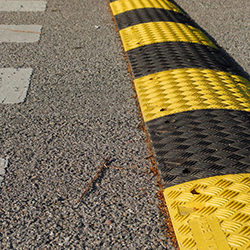Are there different types of speed bumps?
Yes, there are various types of speed bumps, including traditional speed humps, speed cushions, and raised crosswalks. Each type is designed to slow down vehicles but may have different impacts on vehicle suspension.
How can speed bump risks be mitigated?
Speed bump risks can be mitigated by designing effective speed bump systems, implementing warning signs and markings, and considering alternative solutions such as speed tables or speed humps.
Do speed bumps affect driver behavior?
Yes, speed bumps can influence driver behavior by encouraging reduced speeds and increased caution. However, they can also lead to aggressive braking and acceleration, impacting traffic flow and safety.
What safety measures are important for pedestrians and cyclists near speed bumps?
Safety measures such as clearly marked crosswalks, pedestrian islands, and dedicated bike lanes can help protect pedestrians and cyclists near speed bumps. Additionally, visibility and warning signs are crucial for their safety.
What regulations govern the installation of speed bumps?
The installation of speed bumps is subject to local regulations and guidelines. Factors such as speed limit, road type, and community input may influence the placement and design of speed bumps.
How do speed bumps impact emergency response times?
Speed bumps can potentially slow down emergency vehicles, affecting their response times to critical situations. However, there are measures and technologies that can mitigate this impact.
Are speed bumps effective in reducing vehicle speed?
Yes, speed bumps are effective in reducing vehicle speed, which can contribute to overall road safety. However, their impact on emergency vehicle access should be carefully considered.
What are the challenges faced by emergency vehicles due to speed bumps?
Challenges include delays in reaching emergency locations, potential damage to vehicles, and increased wear and tear on emergency vehicles.
How can communities provide input on emergency vehicle access and speed bumps?
Communities can engage in discussions with local authorities, participate in public forums, and provide feedback through surveys and community meetings.
What are some innovative solutions for maintaining emergency vehicle access while addressing speed bump concerns?
Innovative solutions include advanced navigation systems for emergency vehicles, adaptive speed bump systems that adjust based on emergency vehicle signals, and alternative traffic calming measures that prioritize emergency vehicle access.
What are the local government regulations regarding speed bumps and emergency vehicle exemptions?
Local governments have specific regulations for installing speed bumps and protocols for emergency vehicle exemptions. It’s important to understand and comply with these regulations for effective emergency response.

